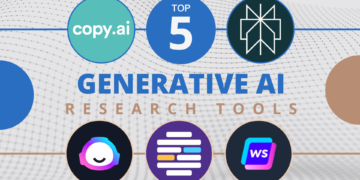The rapid evolution of artificial intelligence (AI) is significantly transforming the field of robotics and autonomous systems. In 2024, several emerging trends are reshaping how these technologies operate, integrate, and impact various industries. Here’s a deep dive into the top five trends in AI for autonomous systems and robotics this year.
1. Enhanced Perception and Decision-Making
AI is revolutionizing the perception and decision-making capabilities of autonomous systems, making them more adept at navigating complex environments.
- Advanced Sensor Fusion: The integration of AI with advanced sensors is enhancing robots’ ability to perceive their surroundings accurately. Technologies such as LiDAR, radar, and high-resolution cameras are combined with AI algorithms to create detailed and dynamic maps of the environment.
- Real-Time Object Recognition: AI-powered object recognition systems are becoming more sophisticated, enabling autonomous vehicles and robots to identify and respond to a wide range of objects and obstacles in real-time.
- Improved Decision-Making Algorithms: Reinforcement learning and other advanced AI techniques are being employed to enhance decision-making processes, allowing autonomous systems to adapt to changing conditions and make more informed decisions.
2. Collaborative Robots (Cobots)
Collaborative robots, or cobots, are designed to work alongside humans, and their integration into various industries is on the rise.
- Human-Robot Interaction: Cobots are being equipped with advanced AI to better understand and interact with human operators. This includes the ability to interpret gestures, voice commands, and even emotional cues.
- Flexible and Safe Operations: AI is enabling cobots to perform a wide range of tasks with flexibility and safety. In manufacturing, for example, cobots can work alongside human workers to handle repetitive tasks while adjusting to dynamic work environments.
- Productivity and Efficiency: The use of cobots is leading to significant gains in productivity and efficiency. They are being deployed in logistics, assembly lines, and other settings to streamline operations and reduce human error.
3. Ethical and Safety Considerations
As autonomous systems become more prevalent, addressing ethical and safety concerns is crucial to ensuring their responsible deployment.
- Safety Protocols: Researchers are developing robust safety protocols to prevent accidents and ensure the safe operation of autonomous systems. This includes implementing fail-safes, collision avoidance mechanisms, and emergency stop features.
- Ethical Guidelines: The creation of ethical guidelines for the use of autonomous systems is becoming a priority. These guidelines address issues such as data privacy, decision-making transparency, and the potential impact on employment.
- Regulatory Compliance: Governments and industry bodies are working on regulations to govern the deployment of autonomous systems. Compliance with these regulations is essential for the safe and ethical use of AI technologies in robotics.
4. Autonomous Systems in Complex Environments
The application of AI in autonomous systems is expanding to more complex and challenging environments.
- Urban Navigation: Autonomous vehicles are increasingly being tested and deployed in urban environments, where they must navigate through dense traffic, pedestrians, and complex road conditions. AI algorithms are being refined to handle these challenges effectively.
- Disaster Response: AI-powered robots are being developed for use in disaster response scenarios, such as search and rescue operations. These robots are equipped with advanced sensors and decision-making capabilities to operate in hazardous conditions.
- Space Exploration: AI is playing a critical role in space exploration missions, where autonomous systems are used to conduct experiments, explore celestial bodies, and perform tasks in environments that are remote and uninhabitable by humans.
5. AI-Driven Maintenance and Diagnostics
AI is also enhancing the maintenance and diagnostic capabilities of autonomous systems, ensuring their optimal performance and longevity.
- Predictive Maintenance: AI algorithms are being used to predict when maintenance is needed for autonomous systems, based on data collected from sensors and operational history. This helps prevent unexpected failures and reduces downtime.
- Self-Diagnosis: Autonomous systems are being equipped with self-diagnostic capabilities, allowing them to identify and address issues without human intervention. This includes detecting anomalies, assessing performance, and executing corrective actions.
- Remote Monitoring: AI-powered remote monitoring tools are enabling real-time tracking and analysis of autonomous systems, providing valuable insights for maintenance and operational decision-making.
Conclusion
The landscape of AI in autonomous systems and robotics is rapidly advancing, with significant trends shaping the future of these technologies. From enhanced perception and decision-making to the rise of collaborative robots and ethical considerations, these developments are driving innovation and transforming industries. Staying informed about these trends is crucial for leveraging AI’s potential responsibly and effectively in the evolving world of robotics.





































